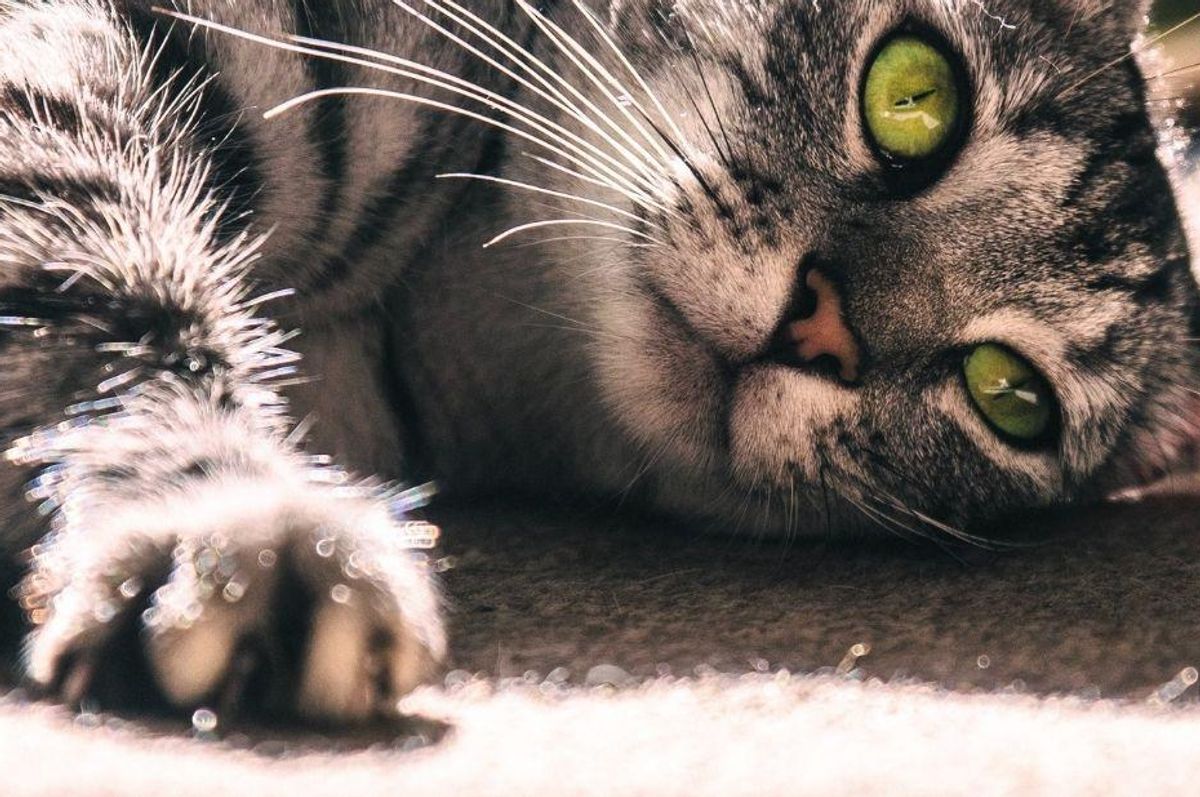
States are passing legislation making cat declawing illegal.
Anyone who has had cats knows they can do a number on your furniture. Even if you get a scratching post for them, they may prefer to claw your chair backs or sofa arms. Even if you make liberal use of a spray bottle to shoo them away from things you don't want them to scratch, they may throw a huge claw-sharpening party in your living room while you're asleep.
They are soft and gorgeous, but they have razors on their feet. That's just how cats are.
Some people try to circumvent this reality by having their pet cats declawed. By surgically removing a cat's claws, pet owners remove the problem of furniture clawing. But they also remove a major part of a cat's anatomy, which can cause lifelong problems for our feline friends.
In fact, the practice is so potentially detrimental that states are beginning to make laws banning it.
In 2019, New York became the first state to ban onychectomy—the technical term for cat declawing—in most instances. The only exceptions are if the amputation procedure is being done to treat a cat's medical condition, such as infection or injury. Veterinarians who declaw a cat for any other reason face a $1,000 fine.
Now Maryland has joined New York, with its own legislation prohibiting the practice passing in both the state house and senate. According to the Associated Press, the bill stipulates that vets who declaw cats for any reason other than "therapeutic purposes" would face a fine of up to $5,000 for a first offense and up to $10,000 for a second offense, as well as possibly having their license suspended or revoked.
"Declawing is a horrendously painful and disfiguring surgery," Senator Mary Washington (D-Baltimore City) said, according to WUSA 9 News. "It is positively inhuman and conducted solely for the benefit of the owner. It has no benefit for the cat, in fact, quite the opposite."
As the Humane Society of the United States points out, declawing a cat isn't the cat equivalent of a human manicure, like many people believe it is. It's the equivalent of cutting off our fingers at our last knuckle, removing our fingernails entirely. Imagine how much more uncomfortable and limiting our lives would be without our fingertips, not to mention the painful recovery from such a surgery. That's similar to how declawing impacts cats.
"Medical drawbacks to declawing include pain in the paw, infection, tissue necrosis (tissue death), lameness, and back pain," writes the Humane Society. "Removing claws changes the way a cat's foot meets the ground and can cause pain similar to wearing an uncomfortable pair of shoes. There can also be a regrowth of improperly removed claws, nerve damage, and bone spurs."
Declawing cats may also create challenges for them while using the litter box and may lead a cat to bite more than they normally would as well.
A big round of applause for the state of Maryland for being the 2nd state behind New York to recognize that cats have the right not to undergo forcible amputation - in other words they\u2019ve outlawed declawing!https://people.com/pets/maryland-will-become-second-state-to-prohibit-pet-owners-from-declawing-cats/?amp=true\u00a0\u2026— Jackson Galaxy (@Jackson Galaxy) 1647050693
While the American Veterinary Medical Association (AVMA) discourages the practice of cat declawing and animal rights activists have pushed for it to be banned, the New York State Veterinary Medical Society was a vocal critic of New York's ban. The organization, which is the largest veterinarian organization in New York, said that declawing should be allowed if an owner finds themselves with no alternative other than abandonment or euthanasia.
Animal rights activists, however, have celebrated the legislation as a victory for cats, who rely on their claws as essential body parts. When we know better, we do better, and knowing how declawing cats negatively impacts their quality of life makes it a practice that should only be done if it's medically necessary for the cat not for the convenience of the human charged with their care.
- He calls himself Big Cat Derek, and he makes some of the Internet's ... ›
- It turns out your cat actually does love you, a new study claims ... ›
- New York just became the first state to ban the 'barbaric' practice of ... ›
- A major study claims your perfect pet cat actually does love you - Upworthy ›

